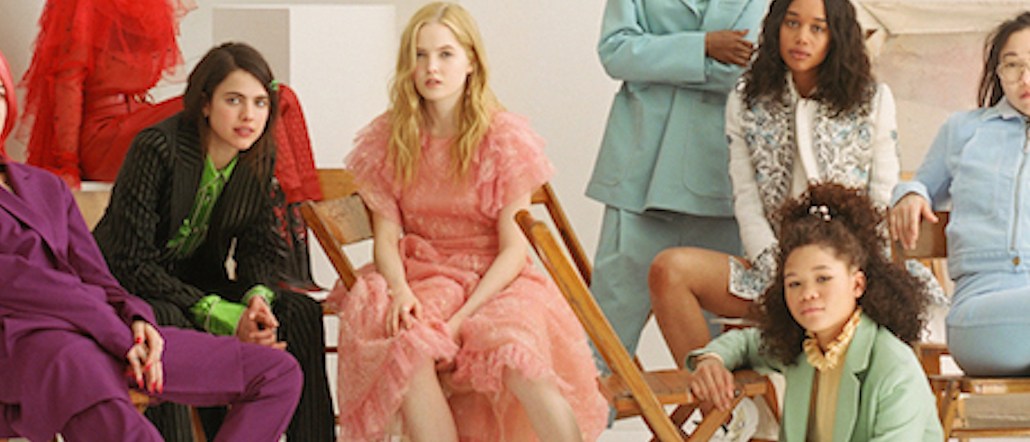Teen Vogue is ditching print, but it’s still making ‘magazine’ covers for Snapchat

Though Teen Vogue announced the shuttering of its print edition in November 2017, it hasn’t stopped the Condé Nast-owned publication from preserving the art of the magazine cover.
Now a digital-only publication, Teen Vogue debuted its third interactive digital cover today, featuring a video of singer Dua Lipa talking in front of a mockup of the magazine’s original print cover design. The content was first teased on Snapchat Discover this morning in a series of videos designed to provide a sneak peak to its audience on the platform, where more than 60 percent of users are under age 25. The May cover follows Teen Vogue’s first-ever digital cover in March for the annual Young Hollywood issue, which included nine separate digital covers and accompanying social content for each of the featured actresses. It also comes on the heels of last month’s interactive cover on gun violence in advance of the national March For Our Lives protests.
“Even when there was a print magazine, most of our audience experienced our cover on social media and on digital only,” said Phillip Picardi, chief content officer at Teen Vogue and Them, Condé Nast’s LGBTQ-focused publication. “Beyond that, every brand ‘breaks’ their covers by announcing on social media. So we figured: Why not continue the press momentum of a ‘cover moment,’ and the editorial excellence that comes with delivering a cover, and simply package it for the medium where it’s most effective?”
Teen Vogue is joining an increasing number of publications that are experimenting with new digital models of the traditional magazine cover as many continue to say goodbye to print in an effort to cut costs. Complex, for example, launched Complex Cover last year, a video series that transformed the idea of a print cover into short clips that live on YouTube and are distributed on social media. Nylon, too, has turned to the digital cover to announce the latest issues, debuting its first with Jhene Aiko in November 2017 after announcing the end of its print magazine in September.
For Teen Vogue, the medium that has increasingly resonated with its readers is Snapchat. Whembley Sewell, channel manager at Teen Vogue who manages Snapchat Discover, said the team was inspired to launch today’s issue on the platform after seeing a spike in engagement levels surrounding its gun control content in March. While Teen Vogue’s presence on the platform has steadily grown in the last year, it experienced a more than 520 percent increase in unique viewers on Discover stories in March from the previous month. Teen Vogue didn’t share specific figures around its viewers on Snapchat Discover.
With Lipa, the goal was to get to the “heart of the issue” by sharing concise, engaging videos of the singer discussing topics in the publications’ latest news pieces like beauty inclusivity and dismantling gender norms, Sewell said.
“What’s interesting is that Snapchat Discover is sometimes the first exposure to a brand,” she said. “[Our readers] see an edition that they’re really interested in, they see op-eds and opinions of young people like them, and they want more of that. It’s a way of discovering our brand identity that in turn drives loyalty.”
While the gun violence issue is now Teen Vogue’s top-performing digital cover story, it remains unclear if efforts like Snapchat and interactive social media covers will ultimately help Teen Vogue overcome slipping readership numbers. Teen Vogue had nearly 10 million unique viewers in April 2017, but a year later it has slipped to less than half of that, at just around 4 million, according to ComScore data. There was a slight uptick in February — the same month as the brand’s first digital cover — but web traffic declined the following month.
Regardless, Sewell said honing in on platforms like Snapchat helps build awareness for not just the brand itself, but its recent efforts to tackle issues like politics and sexual education in a way it hadn’t previously. Earlier this month, Teen Vogue posted Snapchat content on topics including understanding consent in a sexual encounter and cultural appropriation in fashion.
“In terms of looking at things to cover [on Snapchat], we look to conversations on social and consider what’s going on in people’s lives,” she said. “We want to create editions that supplement their lived experiences. Engagement has maintained after our audience saw we were dedicated to covering these subjects that impact their lives.”
Picardi echoed Sewell and said that, despite the loss of the print edition, being digital-only has allowed the team to be more strategic and less bifurcated in the way it creates editorial content.
“Being digital-only has offered us so much more focus,” he said. “I feel we can be more nimble and respond in an impactful way as moments happen, rather than waiting to make our statement. And that’s been an incredible rallying cry for the whole team.”
More in Media

Media Briefing: The top trends in the media industry for 2025
This week’s Media Briefing takes a look at the top trends from 2025, from digital advertising revenue performance to AI licensing deals.

Digiday Scorecard: Publishers rate Big Tech’s AI licensing deals
Digiday has compiled a scorecard grading AI platforms to make sense of the growing number of players in the AI content licensing market.

Publishers are hunting for AI prompt data — now they’re starting to get it from third-party companies
Publishers are finally gaining some visibility into AI search, as new prompt data tools crack open a black box.









